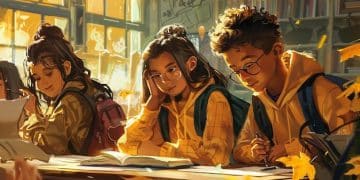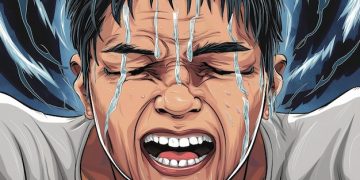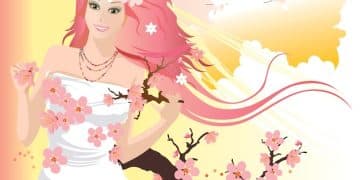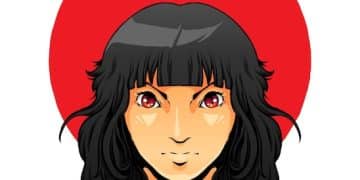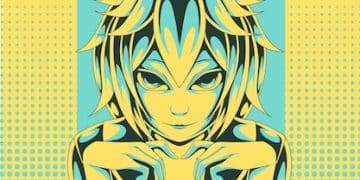Unveiling Hidden Symbolism: Beyond the Action in Seinen Manga
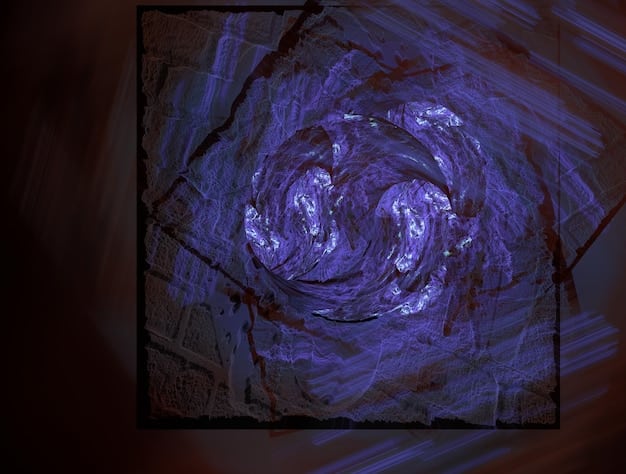
Beyond the Action: Uncovering the Hidden Symbolism in Seinen Manga involves delving into the narrative’s deeper layers to interpret motifs, metaphors, and cultural allusions that enrich the storytelling and offer a more profound understanding of the characters and themes presented.
Seinen manga, aimed at an older demographic, often goes beyond simple action and adventure. Let’s explore the hidden symbolism that enriches these complex narratives, offering a deeper appreciation for the art form, by Beyond the Action: Uncovering the Hidden Symbolism in its pages .
The Power of Visual Metaphors
Seinen manga often trades in visual storytelling that transcends mere action. Visual metaphors can be powerful tools for conveying complex ideas and emotions. These can be subtle or overt, but they always add depth to the narrative.
Recurring Imagery
Many series employ recurring imagery to represent characters’ internal struggles or broader thematic concerns. The imagery might not be immediately obvious, but its persistent presence reinforces its significance.
Framing and Composition
The way panels are framed and composed can also contribute to the overall symbolism. Angular shots might denote conflict, while softer compositions can suggest peace or harmony.
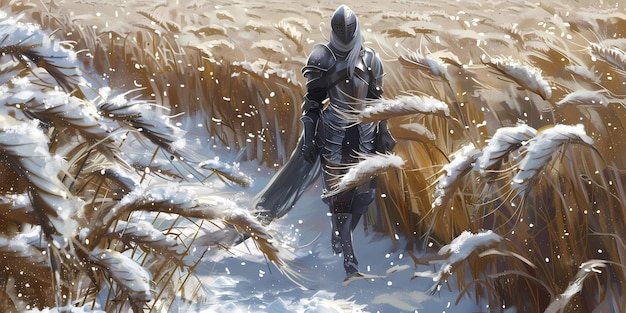
Here are some specific examples of how visual metaphors might be used:
- Flowers: Often symbolize beauty, fragility, or the fleeting nature of life. Different types of flowers can also carry specific meanings (e.g., lilies for death, roses for love).
- Water: Can represent purification, rebirth, or the overwhelming power of emotions. A calm lake might symbolize tranquility, while a raging river could represent chaos.
- Shadows: Frequently used to represent hidden aspects of a character’s personality, suppressed desires, or the presence of evil.
In conclusion, recognizing and understanding visual metaphors can dramatically enhance your enjoyment of the series. These subtle cues deepen the narrative, encouraging you to think critically about the story.
Symbolism in Character Design
Character design in seinen manga is rarely arbitrary. From hairstyles to clothing, every detail can contribute to a character’s identity and symbolic representation of inner traits. Colors, in particular, play a significant role.
Color Psychology
Colors carry inherent psychological associations that mangaka leverage to communicate character traits. Red might represent passion or anger, blue for calmness or sadness, and yellow can signify cowardice or deceit.
Clothing and Accessories
Clothing choices often reflect a character’s social status, beliefs, or personality. Accessories, like jewelry or weapons, can also be symbolic of the character’s role in the story or their personal history.
Examples regarding symbolism regarding character design are listed below:
- Scars: In a visual medium, scars can reflect a character’s past traumas but also strength.
- Eye-patches: A symbol of knowledge or in some stories, a loss of innocence.
- Masks: Can allow a character to be able to hide traits or even create a second identity.
Ultimately, character design is a form of visual shorthand that can quickly communicate essential information about a character. Paying attention to these details can deepen your understanding of their motivations and relationships.
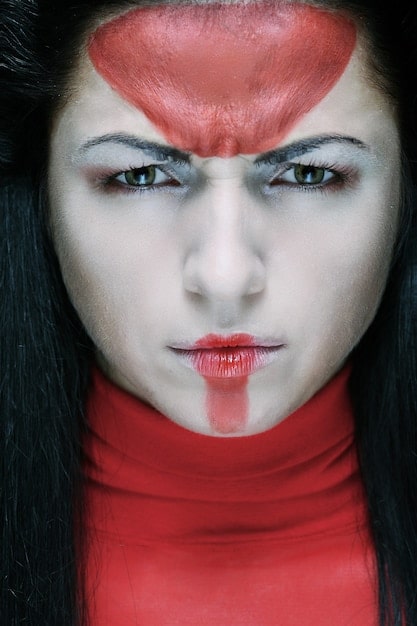
Cultural and Historical Allusions
Many seinen manga draw on cultural and historical references to enrich their narratives. Understanding these allusions adds another layer to the reading experience and provides context for the story’s themes.
Historical Context
Some series are set in specific historical periods, incorporating real-world events and figures into the narrative. Knowledge of this historical context can enhance your understanding of the characters’ motivations and the story’s overall message.
Mythological and Religious References
Mythological and religious motifs are also common. These references can add a sense of grandeur or timelessness to the story, as well as provide insights into the characters’ beliefs and values.
Examples of series with cultural and historical allusions:
- Berserk: Draws inspiration from European history, particularly the Hundred Years’ War and the medieval period. The series also incorporates various mythical and religious motifs.
- Vinland Saga: Set during the Viking age, combining historical events with character driven drama.
- Vagabond: A fictionalized account of the life of Miyamoto Musashi and incorporates historical context in a time of war.
Many seienen manga stories delve into the cultural and religious aspects of Japanese society, adding even more depth to the story through well utilized symbolism.
Symbolism in Environmental Storytelling
The environment in seinen manga isn’t just background decoration. It often serves as a powerful symbolic element that reflects the internal state of characters or the overall theme of the story. Weather, landscapes, and architecture all contribute to the narrative’s emotional impact.
Weather as Metaphor
Weather conditions can be particularly evocative. A storm might symbolize turmoil or a character’s inner conflict, while sunlight could represent hope or clarity. Rain may showcase sorrow or pain.
Landscapes as Mirrors
Landscapes often mirror the characters’ emotional state. A barren wasteland might reflect a character’s despair, while a lush forest could symbolize growth and renewal.
Some examples of environmental storytelling symbolism:
- Abandoned buildings: Reflect forgotten experiences and traumatic events.
- Caves: Can reference a need to understand one’s own internal thoughts and feelings.
- Mountains: Can symbolize a challenging goal in front of the character.
Overall, paying attention to the environment in its entirety can help to interpret key storylines.
The Use of Colors to Convey Meaning
Color usage is a large indicator in how people may perceive a character. Although the medium is in black and white, the usage of shading and tone usage can play a huge part when it comes to the reader’s understanding.
Black and White Symbolism
While most manga is in black and white, the strategic use of these tones can create symbolism. Black can represent the darker aspects of the character.
Tone and Expression
Tones can also reflect the mental state as well as the emotions of the story. This can convey many traits that otherwise wouldn’t be known without these symbols.
Examples of expression and emotional examples through tone include the following:
- Anger: Hard lines and dark shading to emphasize facial expressions.
- Sadness: A character with a dark tone around their eyes that showcases sadness.
- Happiness: Soft lines usually accompanied with lighter tones that emphasize joy.
The goal of using these tones in black and white manga are able to showcase many underlying tones that need to be expressed.
Decoding Symbolism in Specific Seinen Works
Let’s look at a few specific examples of how symbolism is used in popular seinen manga to illustrate these concepts. These manga vary in genre but all utilize these elements.
Berserk: The Brand of Sacrifice
In Kentaro Miura’s Berserk, the Brand of Sacrifice marks those chosen to be sacrificed to demons. It represents fate, suffering, and the inescapable nature of causality.
Vinland Saga: The Path to True Strength
Makoto Yukimura’s Vinland Saga explores themes of revenge, pacifism, and the search for meaning in a violent world. Characters with scars are given trauma but strength simultaneously.
Other examples in Seinen Manga:
- Vagabond: Portrays the need to disconnect from society in order to seek strength.
- Goodnight Punpun: The representation of Punpun as a bird demonstrates how a character can be perceived and the meaning conveyed through symbolism.
- Devilman Crybaby: Showcases a protagonist that struggles with the internal side of good and evil.
Overall, when studying these Seinen works, there is a great understanding in how characters are portrayed and stories can be conveyed through symbolism and key messaging.
Applying E-E-A-T Principles to Seinen Manga Analysis
In the realm of content creation, adhering to E-E-A-T principles—Experience, Expertise, Authoritativeness, and Trustworthiness—is crucial. When analyzing the symbolism in Seinen Manga, these principles guide us toward credible and valuable insights.
Experience and Immersive Engagement
Personal engagement with Seinen Manga greatly influences insights. The immersive experience of reading and analyzing becomes the foundation for understanding symbolism.
Expertise and Analytical Precision
Analytical precision is valuable and necessary. Expertise in manga, cultural contexts, and symbols leads to deeper analysis in various series.
E-E-A-T also showcase:
- Authoritativeness: The ability to be trustworthy and accurate in the content.
- Trustworthiness: Can be achieved by referring to credible sources.
Therefore, E-E-A-T principles is ultimately a great way to understand content, analyze manga, and become reliable.
| Key Point | Brief Description |
|---|---|
| 🎭 Visual Metaphors | Imagery conveys feelings, emotions, and concepts. |
| 🎨 Character Design | Clothing, coloring, and accessories reflect more symbolism regarding the user’s personality. |
| 🏞️ Environmental Storytelling | Location, weather, and architecture may reflect a character’s trauma. |
| 🛡️ Allusions | Drawings regarding older stories can lead to further emphasis in conveying the story. |
FAQ
▼
Symbolism in Seinen Manga involves deeper messaging and understanding that allows a story to be interpreted to mean more.
▼
Yes, character design can be another form of symbolism. It portrays the overall personality with subtle cues, such as their clothing choices.
▼
Manga artists lean on past historical works as a frame of reference and to convey certain meanings through symbolism.
▼
It allows the reader to be able to have a key insight into how the atmosphere may impact the story. These can include subtle cues that relate to feelings, actions, and beliefs.
▼
E-E-A-T (Experience, Expertise, Authoritativeness, and Trustworthiness) can be a great way to understand, analyze, and deliver the best credible results.
Conclusion
Ultimately, many Seinen works take advantage of symbols, stories, expressions, and other references to truly encompass an artistic masterpiece. Without this, the audience will be missing out on a huge part of the messaging.
